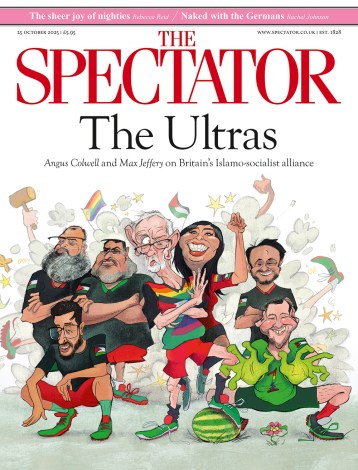Next, Osborne should tackle the plague of charity shops depressing our high streets
The dramatic form of the modern, Brownian Budget speech requires a headline-grabber at the end to deflect commentators from analysis of the statistical soup and re-announced tax-tinkering that went before. But the politics of being ‘all in it together’ means that the rabbit in George Osborne’s hat was never going to be abolition of the 50 per cent top rate of income tax — and he made that pretty clear long before he got up to speak. So if you were planning to spend this weekend restocking your cellar with first-growth clarets (following Christopher Silvester’s excellent advice last week) on the strength of a sudden shrinking of your tax bill, you were misguided. It was, nevertheless, one of the most sensible things Osborne could have done. Alistair Darling’s poison-arrow parting shot is reckoned by the Adam Smith Institute and others to be costing the Treasury billions per year in revenues from those who have chosen to move abroad rather than pay it. It gives Britain one of the highest marginal tax rates in the world when you include National Insurance, which is the plainest possible disincentive to the entrepreneurial spirit the government is so keen to encourage.
It is also a feeble missile to aim at million-pound RBS bankers (323 of whom were revealed last week) and their City brethren, though that is its symbolic purpose — and you might argue that if the bankers had shown the kind of self-restraint and social awareness I have been urging on them in this column, then the Chancellor might have found it politically feasible to start cutting top tax rates sooner rather than later, which really would have been a ‘budget for growth’. So that’s another thing, in a symbolic sort of way, we can blame on ex-RBS chief Sir Fred Goodwin. No wonder he’s been reported in parliament to have got himself a super-injunction, whatever that is.
High street desolation
What was not obvious to me from the Budget speech is what the Chancellor thinks about the disturbing growth of the charity-shop economy. Of course we’re all as pleased as he is about the resurgence of export manufacturing, and we can all welcome his measures to help the kind of innovative small firms that occupy industrial units in the backlands of every town and suburb: the Brompton bicycles of economic recovery. These are the businesses that will pedal us back up the hill to prosperity in the medium term and it’s right to free them of red tape caught round their wheels. But meanwhile, there is an equally urgent but more visibly demoralising problem which I’m not so sure he has spotted: the desolation of the British high street.
Nationwide’s ‘consumer confidence index’ showed its lowest reading in February since it was invented seven years ago: 38 points, compared to 82 a year ago and 110 before the credit crunch. Only one consumer in five now thinks this is a good time to contemplate making a major household purchase, and expectations six months ahead show a vertiginous decline from an optimistic peak last spring.
Indices are all very well, but this one chimes with personal observation: how many times last year did you find yourself in a crowded restaurant saying, ‘Well, we may be just pulling out of a nasty recession, but look at this place: there’s plenty of money around.’ I bet you haven’t said that since Christmas. The prime reason you haven’t said it is because inflation is making you think twice before ordering anything except the cheapest menu deal, and because the tables that used to be occupied by public-sector fat-cats are empty (except the ones reserved for the BBC, of course).
But besides this shrinkage of spending power — the sharpest since the 1970s, according to the Institute for Fiscal Studies — there is a psychological downward spiral. The last quarter’s 0.6 per cent GDP contraction was a chilling shock. The battle for Libya, the devastation in Japan, the weakness of house prices, the prospect of higher interest rates, all contribute to a dismal mood — and the most visible expression of it is retailers closing down wherever you look, their space left empty or filled by yet another charity shop.
The charity-shop index
Don’t get me wrong: I’ve raised funds for charities and I know how difficult it is. But one in seven shop units across the country is empty — one in four in black spots like Altrincham, Margate and Stockton-on-Tees — and 10,000 more are expected to become so this year. Pretty well everything has conspired against the small commercial retailer: supermarkets, the internet, banks that won’t lend, councils that charge stinging business rates but make town-centre parking impossible, heating costs, employment law, the VAT rise, and now shoppers with a lot less cash in their pockets.
The rash of charity shops (which enjoy business-rate relief) is both a response to the glut of empty space, and one more competitive blow. Not only that, I suspect charities are beginning to saturate their own market and cannibalise each other’s trade. Worthy though they may be, the charity-shop count in any town centre is a reliable index of consumer gloom. It’s rising, and it’s contagious for the rest of the economy.
So the Chancellor and his policy wonks now need to turn their attention to the high streets as well as the industrial estates. Empty shopfronts need filling with craft workshops, artists’ studios, pop-up restaurants, community libraries, farmers’ markets, fitness centres, breakfast clubs, whatever brings new life and cheerfulness. Landlords, councils and banks need carrots and sticks to make it happen: the sort of thing Labour’s bloated regional development agencies largely failed to achieve, despite their lavish budgets. Of course charities have their role in this project, too — in the Big Society, they might even organise some of it — but if the charity-shop index has fallen in a couple of years’ time, that will be a sign of renaissance.






Comments